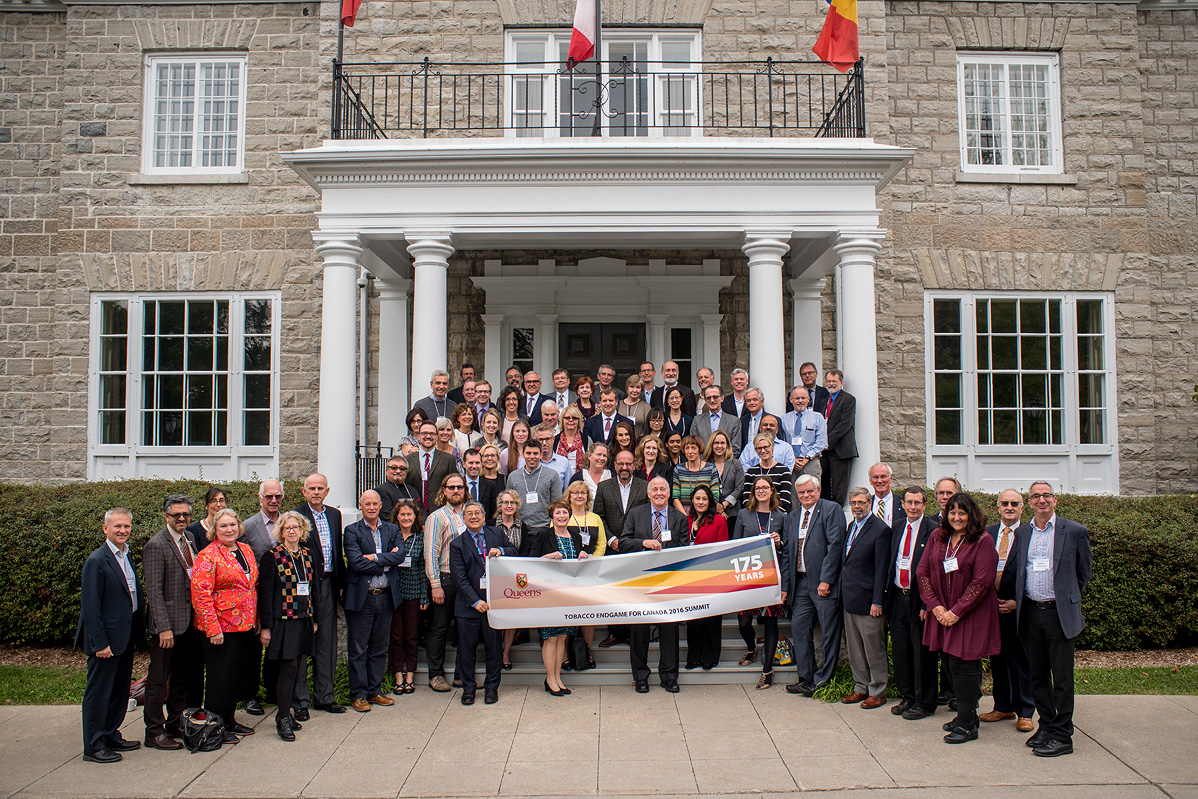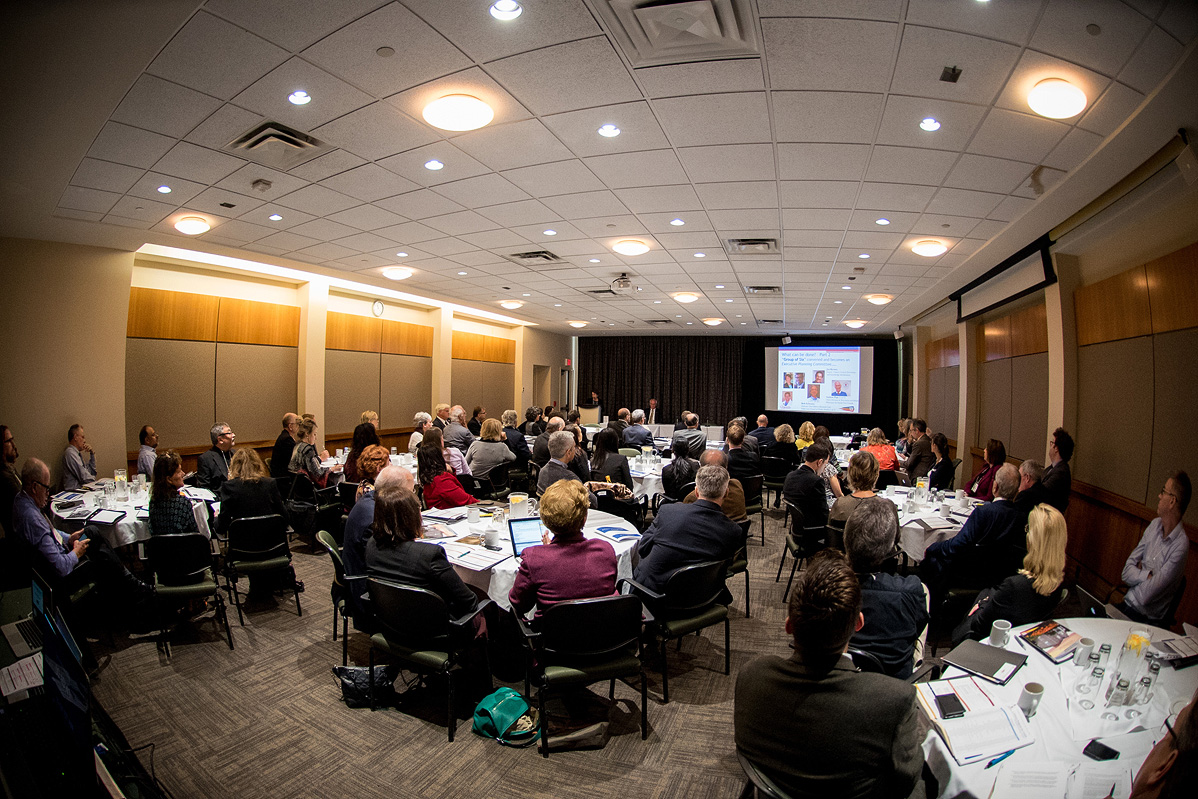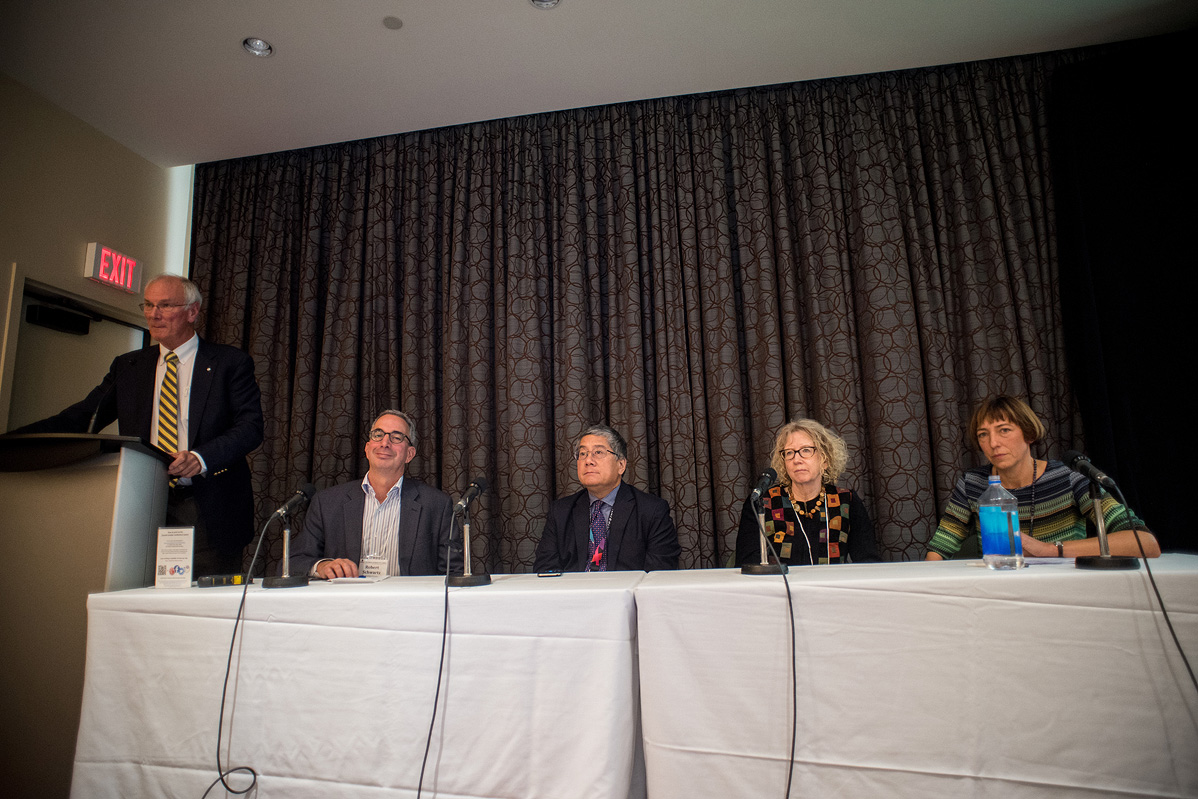Stubbing out tobacco use
October 4, 2016
Share

A summit of Canada’s leading health experts spent two days discussing bold ideas and examining a series of recommendations aimed at reducing the rate of commercial tobacco use in Canada to below five per cent by the year 2035. The Tobacco Endgame for Canada Summit, which ran from September 30 to October 1 at Queen’s University, brought together leading health and policy experts with the aim of developing a strategy to achieve a “tobacco endgame” – defined as commercial tobacco use prevalence of less than five per cent by 2035
“Achieving this goal towards a commercial tobacco-free future will require us to consider bold, novel ideas,” says Elizabeth Eisenhauer, Head of the Queen’s Department of Oncology and Chair of the Executive Planning Committee for the Tobacco Endgame Summit. “There is no current recipe or playbook to achieve a tobacco-free future, but we believe the ideas coming out of this summit represent a strong basis for governments, professional organizations and advocacy groups to work together towards this important objective.”
 The summit concluded with a call for the creation of a Tobacco Endgame strategy for Canada that will achieve a rate of commercial tobacco usage of less than five per cent by 2035.
The summit concluded with a call for the creation of a Tobacco Endgame strategy for Canada that will achieve a rate of commercial tobacco usage of less than five per cent by 2035.
“We want to see a future where every Canadian can breathe easily,” says Debra Lynkowski, CEO of The Canadian Lung Association. “Reducing commercial tobacco use is a pivotal step towards achieving that goal. The success we have had to date is a direct result of a collaborative, coordinated effort; the Endgame is the natural progression of those efforts. It is necessary for us all to bring forth our most innovative ideas and lead Canadians towards a healthier future free of lung disease and we are excited to be a part of it.”
 To ensure momentum carries forward from the convention, the summit also called for the creation of an Endgame Cabinet. Membership in the cabinet is to include members of health charities and health professional organizations from across the country – including but not limited to those represented at the summit. The Cabinet will be responsible for communicating with and educating the public about the Endgame initiative, encouraging Endgame strategy deliberations and discourse amongst policy makers and government and ensuring accountability of those in leadership to pursue Endgame measures. This Cabinet will also engage with relevant federal, provincial and territorial government officials to continue progress towards the Endgame objective.
To ensure momentum carries forward from the convention, the summit also called for the creation of an Endgame Cabinet. Membership in the cabinet is to include members of health charities and health professional organizations from across the country – including but not limited to those represented at the summit. The Cabinet will be responsible for communicating with and educating the public about the Endgame initiative, encouraging Endgame strategy deliberations and discourse amongst policy makers and government and ensuring accountability of those in leadership to pursue Endgame measures. This Cabinet will also engage with relevant federal, provincial and territorial government officials to continue progress towards the Endgame objective.
“The Canadian Medical Association issued its first public warning about the dangers of tobacco use in 1954, and led by Dr. Fred Bass and many other dedicated and visionary physicians across Canada it is gratifying that rates of use have fallen substantially since that time,” said Granger Avery, President of the Canadian Medical Association. “The time is now, however, for a final push to completely eliminate this public health scourge that has caused so much pain and suffering.”
The summit was hosted by Queen’s University as part of its 175th Anniversary celebrations, as a continuation of the Queen’s tradition of bringing together remarkable people who have helped build Canada as a nation and made significant contributions around the world. For more information on the summit and it's outcomes, please see the summit background paper.